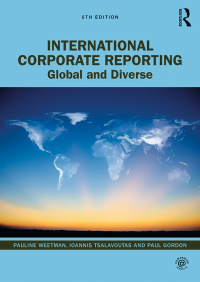Question
Morning Star Canoe & Kayak Company: Analysis of Financial Statements In the fall of 2021, Sue MacIntosh, owner of the Morning Star Canoe & Kayak
Morning Star Canoe & Kayak Company: Analysis of Financial Statements
In the fall of 2021, Sue MacIntosh, owner of the Morning Star Canoe & Kayak Company, approached a local bank for additional funding of $1.5 million to meet the growing requirements of her canoe and kayak manufacturing company. Revenue had increased four-fold from $300,000 to $1,200,000 in three years and net income (N/I) had grown from $37,100 to $93,100 during the same period. Sue confidently discussed her future plans and the financial needs of her company with the bank manager.
In her discussion with the bank manager, Sue described the development of her company and the growth opportunities for the canoe and kayak market in Canada and the northern United States. Sue proudly described the performance of her company, which she believed was doing well in a highly competitive industry environment, to the bank manager. The manager looked over the financial records of Morning Star, including an income statement and balance sheet (see Exhibits 1 and 2), and gave them to his loan officer to analyze. He assured Sue that, once the documents were analyzed, he would get back to her with a decision about her loan. He instructed the loan officer to analyze the performance of the company and evaluate the loan application submitted by Sue as soon as possible and to provide a recommendation about the loan.
Canadian Canoe and Kayak Manufacturing
The Canadian Canoe and Kayak manufacturing industry is made up of a number of small and mediumsized companies. Larger companies offer a full line of standard canoes and kayaks that are built using automated manufacturing techniques. These companies sell through retail companies such as Canadian Tire or Costco. Smaller companies consider canoe and kayak building a craft and build a few models that meet more specialized needs of outdoor adventurists. These canoes are often manufactured with wood or specialized light-weight material such as Kevlar. Smaller manufacturers either sell through specialized retailers or directly to customers.
https://madeinca.ca/category/sports/canoeskayaks/
Sales of canoes and kayaks in Canada have grown rapidly during the past few years as there has been a growing interest in paddling, especially in the 30- to 40-year-old age group. The pandemic also contributed to the surge in demand as it did other types of outdoor activities such as cycling. However, sporadic shortages of raw materials limited production. Industry insiders and analysts are optimistic that growth in demand will continue to be robust during the next five years and project a healthy outlook for the industry.
The Morning Star Story
Sue MacIntosh graduated from engineering school in 2010 and spent the first few years of her career with a large multi-product manufacturing company. Sues passion for outdoor adventures led her to spend weekends and holidays canoeing and kayaking. She eventually left her corporate job and joined an Ontario-based company that manufactured lightweight canoes and kayaks. Sue applied her engineering talents and became an expert in designing and building canoes and kayaks. She decided to start her own company in the summer of 2018.
Sue knew that the canoe and kayak market was competitive, but she believed that she could create a blend of high quality and design coupled with a social presence that would enable her company to compete effectively. She sourced all of her materials locally and employed environmentally-friendly manufacturing techniques. Her manufacturing process was labour-intensive and she provided good benefits to her employees who shared her vision.
Sue poured all of her own financial resources into the company and borrowed money using her home and other assets as collateral. As the business grew, she continued to borrow, using her personal assets as security. Initial borrowing of $250,000 grew quickly into loans of $1,000,000. Morning Star was operating at maximum capacity in a rented warehouse that Sue had converted to a manufacturing facility. Sue knew that she would need state-of-the-art equipment and better space if she wanted to continue to grow her company. The company absorbed a lot of cash and Sues personal finances were maxed out.
Sue did not have formal business training and she relied on a friend who she employed on a part-time basis to keep the accounting records and prepare the financial statements. Sue had good relations with her customers, many of whom were also small businesses with limited financial resources. Sue supported her customers by selling on credit. She also tried to build up Morning Stars inventory levels so that she could respond quickly to new orders.
Sue was confident that the loan would help her take her company to the next level.
Required
As the loan officer, prepare a financial analysis for the bank manager and provide your recommendation about making the loan. You should also provide suggestions for actions that would help improve the financial performance of the company.
1. Your evaluation of the performance of the company.
2. Your loan recommendation, including a discussion of the pros and cons of making the loan.
3. Your suggestions for improving the financial performance of the company.


Step by Step Solution
There are 3 Steps involved in it
Step: 1

Get Instant Access to Expert-Tailored Solutions
See step-by-step solutions with expert insights and AI powered tools for academic success
Step: 2

Step: 3

Ace Your Homework with AI
Get the answers you need in no time with our AI-driven, step-by-step assistance
Get Started


